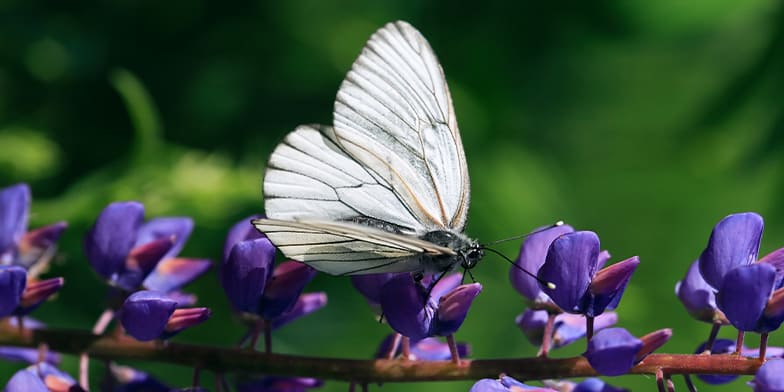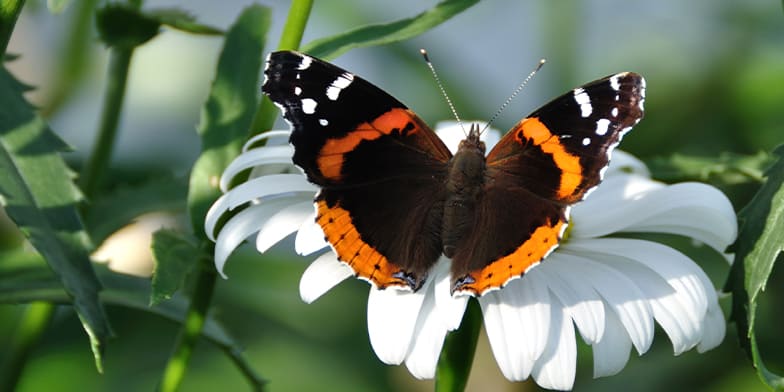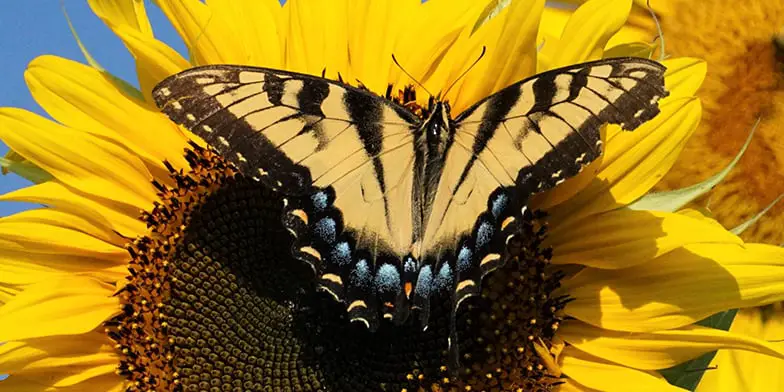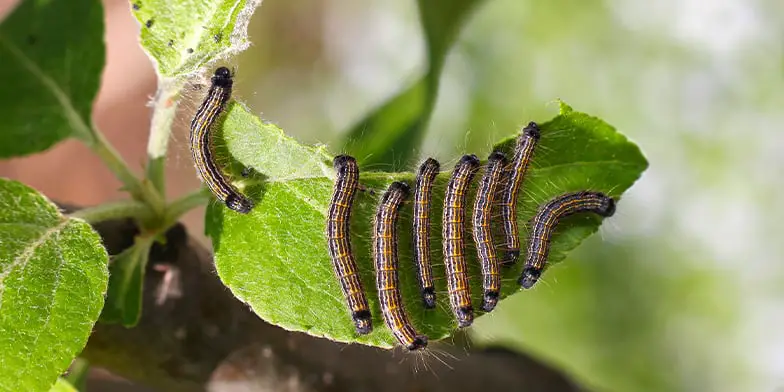
Do you remember chasing butterflies when you were younger to put them in a container or jar home that you made especially for them? They’re colorful, beautiful, magical even, and they look like they’d make incredibly fascinating pets.
Butterflies can be a good choice of pet if you allow them the space and environment needed to fly, thrive, and survive naturally without interference from humans. The best choice of butterfly for a pet is the Monarch Butterfly, but remember as pets butterflies are not overtly affectionate and have a short lifespan.
We can learn a lot from butterflies, and they have some extraordinarily fascinating features that you probably don’t know about. Keeping butterflies as pets might sound inhumane to some, but it can be beneficial for the butterflies as well as educational for us and our children. Read on below to find out which butterflies are best for pets, and which are best left in nature.
What Butterflies are Good for Pets?
While some will argue that no butterfly is a good pet, with the right enclosure, proper care, and maintenance, you can keep a butterfly as a pet.
Monarch butterflies have been a good choice in the past but biological and endangered species activists are strongly encouraging the need for permits if you want to keep this beautiful butterfly in your home.
While there are over 17,000 species of butterfly in the world, some butterfly species are endangered, others are rare, and it is illegal in some US states to collect certain types of butterflies and even more so to kill them, even if by accident.
It’s not currently illegal to keep Monarch butterflies as a pet, but they do meet the criteria for an endangered species, and you may have to get that permit eventually if you want to rear them in your area.
Here are some other common butterflies that make great pets:
Painted Lady (Vanessa cardui)
The Painted lady is the most widespread butterfly in the world and is found in every continent excluding Antarctica and South America. They are not illegal to keep as pets, are easy to catch, and require minimal care.
Although, studies have shown that the Painted Lady does have more of an appetite for purple-colored flowers over other colors.

Cabbage White (Pieris rapae)
Although pretty, these small and pure-looking butterflies are also known as pests for crops like cabbage, broccoli, kale, and others.
The cabbage butterfly can be found in numerous countries such as Australia, North America, Europe, and Asia, where it is thought to have originated in the middle east, and also in New Zealand where it is simply known as the white butterfly.

Red Admiral (Vanessa atalanta)
This friendly butterfly can be found in North Africa, North and Central America, parts of Europe and Asia, and some Hawaiian and Caribbean islands.
They have been known to ‘enjoy’ landing and perching on humans so when handling these beautiful and common butterflies it’s important to be gentle so as not to harm them.

Although they are people-friendly, they can fly fast, and their sporadic and radical flight patterns are hard to follow and catch. If you want to raise a Red Admiral, you’re best option is to find their eggs or caterpillars first. But beware, they like to nest in stinging nettles which can be irritating to the skin.
Eastern Tiger Swallowtail (Papilio glaucus)
This lovely yellow butterfly can grow as large as 14cm (wingspan)! Mostly found in Eastern America, the Eastern Tiger Swallowtail will lay its eggs on a wide range of host plants.

Their caterpillar form starts dark brown and slowly turns to bright lime green with little orange and blue eyes. You can also spot an Eastern Tiger Swallowtail caterpillar easily because of its distinct purple dots that run down its back to its eyes. Creating numerous false eyes to make predators think it’s a snake.
Once this little caterpillar is in its cocoon or chrysalis, it can take up to three weeks to hatch, whereas most butterfly species will only take up to 10 days.
Some of this type of butterfly will emerge as a bright yellow color with black edges, while some, mostly females, will emerge as dark black butterflies with some yellow and blue splashes on their edges.
Should You Catch Butterflies or Collect Caterpillars?
Some choose to start their butterfly pet collection from the caterpillar stage and watch them grow through the whole transition of the butterfly’s circle of life. From caterpillar to pupa (in the cocoon), to an emerging butterfly who lays eggs and the cycle repeats all over again.
Whether you choose to collect butterflies, humanely and safely, or collect caterpillars from host plants is up to you. It’s just important to remember that there are very harmful ways you can go about doing this, and you should avoid them where possible.
After all, catching butterflies is a fun activity – but there’s a right way to do it:
- Use a net that is at least two feet deep and has a wide enough hoop for butterflies to fit in easily
- Plant flowers that butterflies are attracted to so that they find themselves attracted to your garden
- Look for butterflies that aren’t in motion and patiently and carefully swoop them up

If you’re collecting caterpillars or eggs rather than butterflies, we strongly recommend you do not touch the eggs or caterpillars so as not to risk harming them. Instead, take the leaf they’re resting on and pop it carefully in your spacious enclosure.
Keeping a Butterfly as a Pet: Do’s and Don’ts
Yes, many of us who loved chasing butterflies when we were younger would have kept them in little containers and jars if our parents didn’t tell us off. We weren’t to know better, but now that we do, there are a few dos and don’ts of butterfly rearing and keeping.
| Do’s | Don’t’s |
|---|---|
| Create a spacious enclosure for your butterfly to spread its wings and fly freely | Do not keep your butterfly in a jar or a container, even if it has little breathing holes in it. This is not a suitable environment for any living creature. |
| Ensure the enclosure is also free of sharp edges and anything harmful to the health of your butterfly(ies) | Do not include pointed and sharp sticks or twigs for them to ‘land’ on as they can catch their wings on these when flying |
| Provide untreated host plants for the butterflies to lay their eggs | Do not include plants just because they look nice, some plants may contain harmful substances to butterflies such as insecticide |
| If collecting caterpillars rather than butterflies collect them by taking the leaf they are on | Do not touch the caterpillars as they can be fragile and touching them can hurt or kill them |
| Clean your enclosure regularly and replace leaves and flowers with fresh flora and fauna when necessary | Don’t leave the leaves, flowers, and dirt to rot and decay. This doesn’t look nice and won’t promote a healthy habitat for your caterpillars or butterflies |
| Do your research and find out which species of butterfly you have caught. Not all are legal to keep, and some may need a permit | Don’t assume that all butterflies are attracted to the same types of plants and flowers. Once you’ve done your research and found it is ok to raise your butterfly, make sure you have the right flowers and plants in the enclosure for them to enjoy |
| Use breathable mesh cages or a breathable net/mesh cover to promote plenty of filtered and breathable air | Do not, under any circumstance use plastic. Plastic is a harmful compound. |
| Separate butterflies and caterpillars so that the butterflies can’t spread parasites to the caterpillars | Don’t try to raise caterpillars and butterflies in the same enclosure. Rear them separately or rear one batch at a time. |
Conclusion
Raising butterflies can be an extraordinary educational experience for children and adults alike. Taking care of butterflies is not a hard thing to do and can be a rewarding experience for nature lovers to see their cycle of life happen before your eyes.
If you want to move butterflies across state lines you may need a permit but to catch, collect, and house many types of butterflies in your own backyard or home is completely legal and can even help them to thrive without the danger of predators.
References
How to Raise the Eastern Tiger Swallowtail Butterfly life cycle photos | Monarch Butterfly Life (monarchbutterflylifecycle.com)
How to Raise Monarch Butterflies Indoors: 21 Monarch Survival Tips | Monarch Butterfly Life (monarchbutterflylifecycle.com)
Growing and Maintaining Your Own Butterflies | Petful
Taking care of pet butterflies and caterpillars | Keeping Insects
Driven by a passion for those tiny creatures that rule our world, we at Bug Domain strive to be your go-to resource for information on insects.




